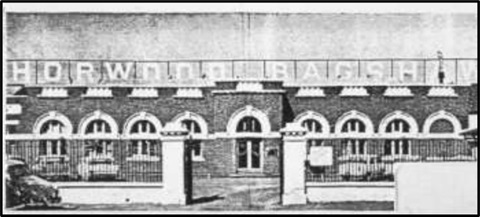Horwood Bagshaw Ltd (Mile End)

John Stokes Bagshaw (1808-1888) was born on 15 August 1808 at Chetwynd, Shropshire, England, third son of Edward Bagshaw, a prosperous farmer, and his wife Margaret nee Stokes.
In his teens Bagshaw was apprenticed to a millwright and engineer.
At first Bagshaw concentrated on the manufacture of windmills, though his skills as a pattern-maker meant that he was soon much in demand by foundries.
In 1843 John Ridley commissioned Bagshaw to make the original patterns of an innovative wheat harvesting machine. Known as ‘Ridley’s Reaper’ or the ‘South Australian Stripper’, the implement for the first time in Australia successfuly combined the operations of both gathering and threshing wheat.
Replacing harvesting by hand the Reaper, pushed by horses, was capable of reaping around six acres / around 2.4 hectares of wheat per day; it provided the simplest and cheapest harvesting method in the world at that time. Over the next fifty years the Reaper sold in the thousands in South Australia and helped to significantly boost local wheat production.
Inspired by the Reaper’s success, Bagshaw soon designed and built Australia’s first winnowing machine: the winnower separated the wheat grain from the chaff and other impurities by screening, then used a fan to blow off the lighter chaff.
Bagshaw’s eldest son, John Augustus Bagshaw (1838-1920), joined the business in 1852, followed by Bagshaw’s third and youngest son, Thomas Henry Bagshaw (1856-1936), in 1870; the business had been renamed as J.S. Bagshaw and Sons in early 1867.
Bagshaws had by then almost outgrown its Elizabeth Street site. In October 1909 the company bought 11.23 acres, around 4.54 hectares, at the southern end of Victoria Street, Mile End from the South Australian Company for £2,000.
Joseph Henry Horwood (1841-1913) arrived in South Australia from Oldham, Lancashire, with his family aboard the Baboo in December 1848.
After schooling in Adelaide at J.L. Young’s Adelaide Educational Institution, from 1858 Horwood gained experience in several engineering enterprises.
In September 1882 Horwood went into business on his own account, taking over the engineering workshop of Samuel Strapps at the corner of Currie and Peel Streets to form J.H. Horwood and Company.
In late January 1924 Horwood and Company took over Bagshaw and Sons to form Horwood Bagshaw Limited; the company’s starting capital was £250,000.
Horwood Bagshaw’s factory was based at Bagshaw and Sons’ Mile End site. Horwood Bagshaw reorganised the factory by dividing it into two divisions, an agricultural machinery section and an engineering section. The latter concentrated on manufacturing boring, drilling and pumping equipment. In its first year Horwood Bagshaw employed around 450 workers in South Australia.